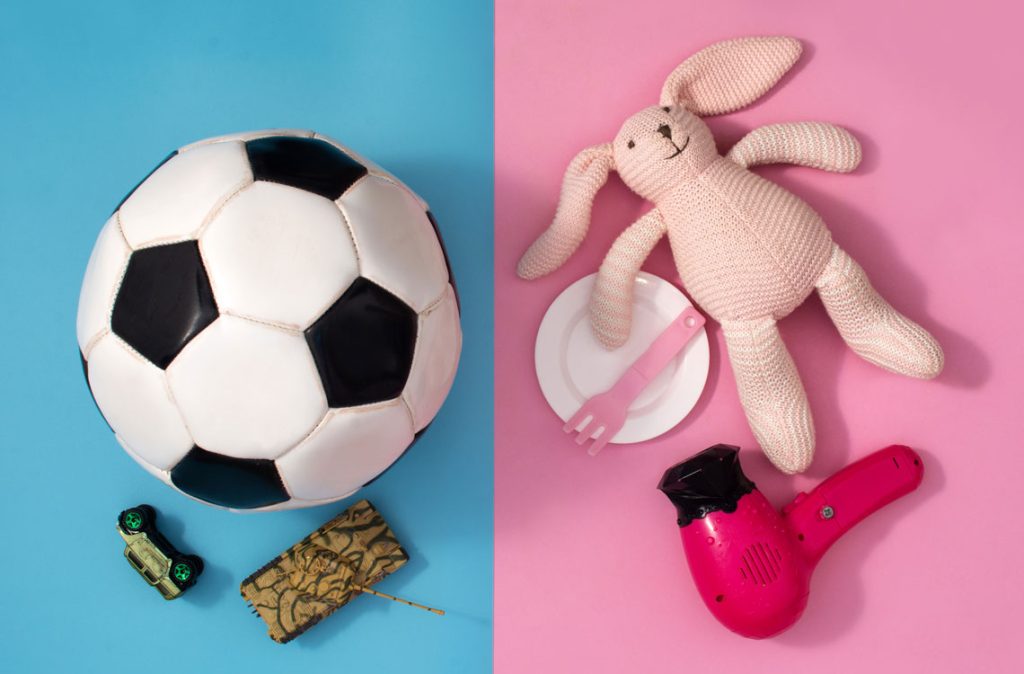Walk into almost any toy store and you’ll still see it: the unmistakable divide.
One side glows with pink boxes, sparkly dolls, and miniature kitchens; the other, a riot of blue packaging, toy cars, and action figures.
It’s as if the shelves have decided who your child should be before they’ve even picked up a toy.
This separation might seem harmless or “just how it’s always been”, but it quietly teaches children what’s expected of them.
Girls get the message that nurturing, beauty, and domesticity are their domains, while boys get adventure, strength, and problem-solving.
Yet in reality, kids don’t come preloaded with “pink” or “blue” preferences; they’re just curious humans drawn to play.
The Pink Aisle Vs the Blue Aisle
Children start absorbing social cues from as young as two years old.
When adults, ads, and even peers reinforce the idea that “this toy is for boys” and “that’s for girls”, it shapes how kids see themselves and others.
It’s not about forcing them to play with dolls or dump trucks.
It’s about giving them freedom to choose without judgement.
Think about it: a little boy who loves playing kitchen might grow up to be a creative chef or just a capable adult who knows how to cook for himself.
A girl who builds LEGO towers might one day be an engineer — or simply someone who enjoys solving problems.
Toys are tools that build skills, not personality labels.
What’s Really At Stake
Beyond colours and packaging, gendered toys limit more than playtime.
They limit imagination and narrow the kinds of skills children develop.
When girls are steered toward dolls and crafts, they practise social and caregiving skills — wonderful qualities, but often at the expense of spatial reasoning or STEM-orientated play.
When boys are nudged toward construction sets and vehicles, they develop coordination and problem-solving skills but miss out on nurturing and emotional expression.
It’s not about turning boys into girls or vice versa – it’s about balance.
Every child deserves a full range of experiences (creative, emotional, logical, and physical) so they can grow into well-rounded adults.
The Gender of Marketing
Let’s be honest: toy companies know what they’re doing. The pink-and-blue divide sells twice as many products.
Parents end up buying “different” sets for each child instead of sharing one big box of toys.
It’s clever marketing, but it reinforces old ideas about gender roles that many parents no longer believe in.
Fortunately, some brands are catching on. You’ll now find ads showing boys playing with dolls and girls building robots – a quiet revolution in how childhood play is portrayed.
But the change still starts at home, with what we encourage or discourage our children to pick up.
What We Can Do As Parents
You don’t need to overhaul your playroom. Start small:
- Rotate toys: Mix and match. Let your child explore different types of play. One day they’re racing cars; the next they’re feeding a teddy bear lunch.
- Watch your language: Swap “That’s for boys” or “That’s not for girls” with “That looks fun; do you want to try it?”
- Challenge stereotypes gently: If relatives or friends comment (“He’s playing with a doll?”), respond casually, “Yeah, he loves taking care of things; it’s really sweet.”
- Model inclusivity: Let your kids see you cooking, fixing things, or doing chores that “traditionally” belong to the opposite gender. Children learn more from what they observe than from what they’re told.
It’s about creating a home where no toy feels off-limits.
Schools and Social Circles Matter Too
Even the most open-minded home can’t fully shield children from outside influences. Playgroups, schools, and media all play a role in shaping preferences.
Encourage teachers and carers to include mixed play activities. Everyone can take turns leading, building, caring, and creating.
At birthday parties or during playdates, set up play zones with a mix of toys. A pretend kitchen beside a racetrack or art supplies next to blocks.
Kids will naturally move between them once the social pressure is gone. You might be surprised to see who gravitates to what when no one’s watching.
Moving Beyond “Boy Toys” And “Girl Toys”
The next time you’re shopping, look at toys through a different lens. Ask:
- What skill or curiosity does this spark?
- Does my child enjoy it — regardless of its packaging?
- Am I projecting my own childhood expectations onto them?
Breaking stereotypes doesn’t mean banning princess dresses or superheroes.
It means widening the options. Letting children choose what excites them without worrying about labels.
A girl can adore dolls and still love dinosaurs. A boy can wield a toy sword and still bake cupcakes. Freedom of play is the first step toward freedom of expression.
Let Kids Be Kids
At the end of the day, toys don’t have gender (people do). And even then, those identities are much more complex than pink and blue boxes can ever express.
Playtime should be a space where children learn who they are, not who society expects them to be.
So, the next time your daughter reaches for a toy truck or your son wants a tea set, let them.
They’re not breaking rules; they’re breaking limits. And that’s exactly how confidence, empathy, and creativity grow.
Disclaimer: The information provided in this article is for informational purposes only and should not be considered as medical advice from Motherhood. For any health-related concerns, it is advisable to consult with a qualified healthcare professional or medical practitioner.
For more insightful stories and parenting advice, stay tuned to Motherhood.sg!
